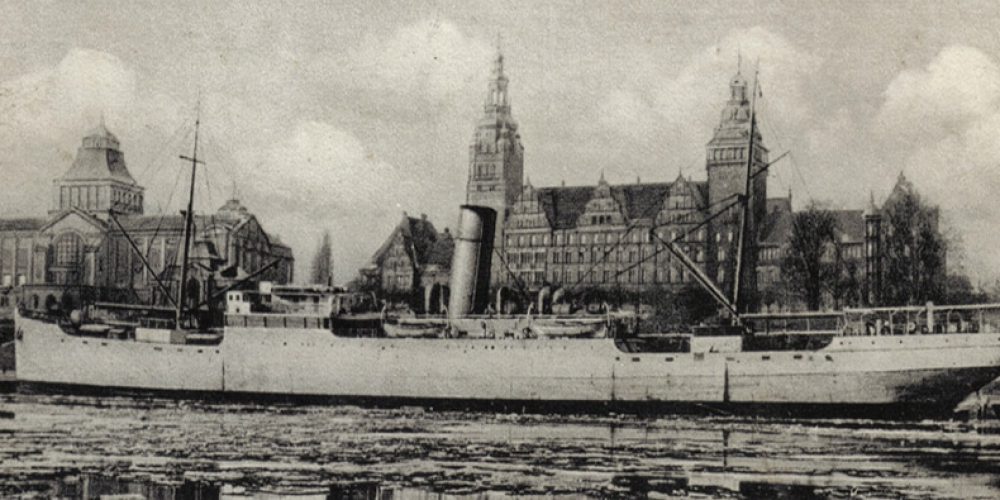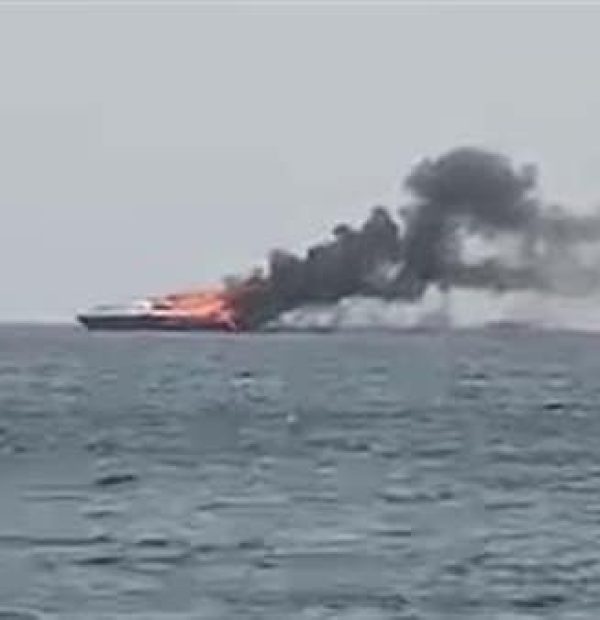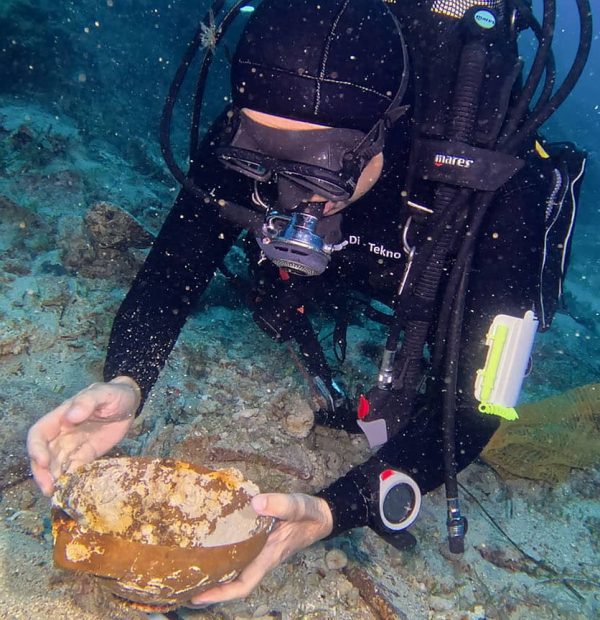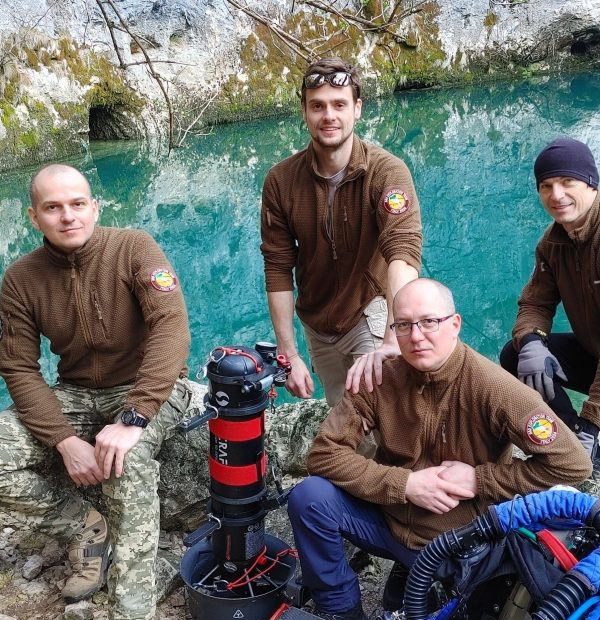Tuesday, 23 April 2024
Menu

In 1921, the British shipyard Workman Clark and Company Ltd. in Belfast, left the merchant ship S/S “Reventazon”. Then in 1936 she was bought by the German shipping company Union Handels-Und Schiffahrtsgeselswchaft from Bremen. Until 1939 she did not stand out, transporting cargo after cargo of fruit and vegetables. Everything changed with the outbreak of World War II and the German invasion of Poland. Right after Germany started the war, the ship, like many other vessels, was converted into a hospital ship (Lazaretschiff) of the Kriegsmarine.
However, the ship did not remain in her new role for long. In October 1939 she was reassigned and became a substitute accommodation for Polish prisoners of war, and in the winter of the same year she already served as a dwelling place for Polish workers of the port and shipyard in Szczecin. At the beginning of 1940, a decision was made to reclassify the ship again. This time it became a living unit. In March, S/S “Bremerhaven” was towed from Szczecin to the area of Police, where there was a synthetic petrol factory. You can read about the diving visit to the factory here.
It is at this point that the S/S “Bremerhaven” begins a dark page in the history of the Second World War. The ship moored on the Domiąża River (one of the branches of the Oder River) was officially used as a residential facility, but in reality, for three consecutive years, it functioned as a German floating concentration camp, mainly for Polish forced labourers of the “Politz” petrol factory.
The S/S “Bremerhaven” initially held Polish prisoners from Pomerania, Lodz, Bydgoszcz, Zgierz and the surrounding area, but over time prisoners of war from various countries attacked by Germany began to be collected on board. The people held on board were used in construction, chemical works and unloading. The duties of commandant were performed by Oskar Pust, while his deputy was Walter Schaffenberg.
During its three years of operation as a concentration camp, Bremerhaven became infamous as a place where 5-10 people a day lost their lives in inhuman conditions. The first victim of the camp was Stanisław Wasilewski. He was beaten for not understanding an order that was given to him in German… To save himself he jumped overboard. A moment later he was shot by camp guards.
In 1943, due to too high mortality rate, a large number of escapes and the needs of the Kriegsmarine that was taking more and more losses, the camp was liquidated. The ship was sent to a repair shipyard in Szczecin, where, after initial extermination and disinfection with Cyclone B, she was adapted for sailing again.
Since January 1944, S/S “Bremerhaven” is on duty in the Baltic Sea. As a transport unit she delivers supplies to still fighting soldiers, surrounded in Courland. It also evacuates civilians and wounded German soldiers. On 29 October, at 17.30, escorted by minesweepers M 155 and M 435, she leaves the Latvian port of Ventspils and, carrying 3 270 people, goes to Gdynia. Among the evacuees were 1,515 wounded soldiers, 680 civilian refugees, 511 members of the Todt Organisation, 200 SS men and 156 Wermacht soldiers.
On 30 October, at 9.32 a.m., five Soviet aircrafts launched an attack on the convoy. As a result, the S/S “Bremerhaven” is hit by two bombs, straight into the ammunition cargo on the stern. A huge explosion follows. A moment later, another attack comes on the burning ship. At 9.40, the escorting minesweeper M 155 gives the S.O.S. signal, and three hours later, first aid arrives.
The rescue operation lasts until the very evening and is finished at 18.30. On October 31, 1944, the ship located 16 mM north from Wladyslawowo, engulfed by the fire raging on the deck, leans over the side and disappears in the waves of the Baltic Sea. During the attack and its aftermath, 470 people on board the “Bremerhaven” lose their lives. It was one of the first tragedies of this magnitude that awaited the Germans during the evacuation of civilians and wounded soldiers, carried out as part of the Hannibal operation.
On 25 July 2002, the wreck lying at a depth of 66 metres was found by an expedition of the Warsaw diving centre Abyss Diving, led by the late Grzegorz Dominik, known in the diving community as “Banan”. Locating the “Bremerhaven” was not the purpose of the dive, as the group was searching for another German ship, the “Goia”. Despite the many clues, it was still impossible to say unequivocally what kind of wreck had actually been discovered…
The exact research material was provided only by an expedition undertaken by representatives of the Maritime Office in Gdynia and the Baltic Wreck Society. On the basis of the collected data, it was possible to establish unequivocally which shipwreck we were dealing with. The characteristic structural features and damage that matched the description, combined with the location, left no doubt that this was the notorious floating German concentration camp S/S “Bremerhaven”.
The steamer, 122 metres long and 16 metres wide, had a displacement of 5355 GRT. She lies heavily damaged on the bottom and capsized on the port side. There are traces of an explosion in the stern and midship sections, while the bow section is separated from the rest. More details can be seen on the posted video by Sławek Paćko, which was recorded in 2008.










Welcome to DIVERS24.COM, your daily source of scuba news, freediving, scuba diving information, and equipment reviews. Our comprehensive coverage of the dive industry from A to Z provides you with all the latest scuba news, training updates, underwater photography tips, and everything else related to scuba diving. Whether you’re a beginner or an experienced diver looking for more knowledge about scuba gear or techniques – we’ve got it covered! With our in-depth articles written by experienced divers who have been there and done that, you are sure to find exactly what you need here at Divers24.com. Dive into scuba news today!
Underwater Media Sp. z o.o.
Szafarnia 11/F8,
80-755 Gdansk, Poland
Welcome to DIVERS24.COM, your daily source of scuba news, freediving, and scuba diving information. Sign in for a weekly news update and discount coupons for dive gear and apparel.
@2023 - underwatermedia.pl. All Right Reserved. Designed and Developed by Tworzenie stron internetowych Gdansk

The Divers24 portal is currently the largest online medium treating diving in Poland. Since 2010 we have been providing interesting and important information from Poland and around the world on all forms of diving and related activities.
Contact us: info@divers24.com